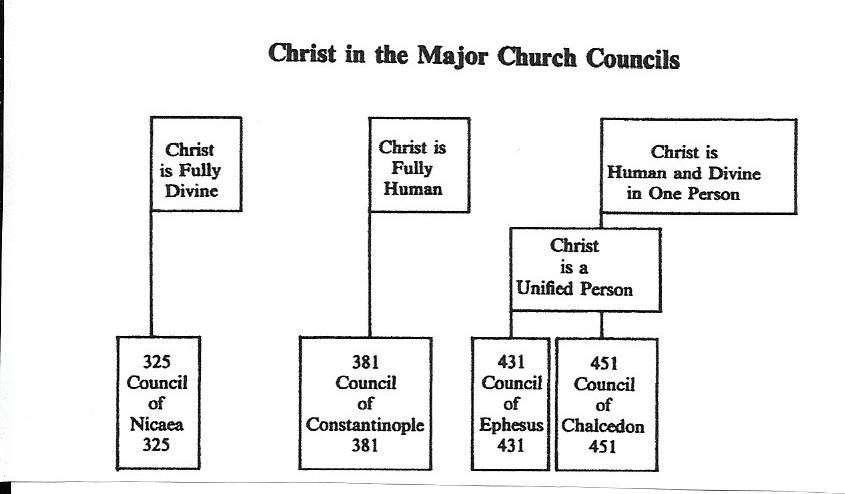The Roman Catholic Church, with its sweeping history and intricate theological frameworks, stands as a unique edifice among Christian denominations. It is both a historical institution and a living testament to the faith that has evolved through centuries. Essential to understanding this church is the exploration of its genesis, marked by the pivotal roles of the apostles, councils, and creeds that helped sculpt its foundational beliefs.
At the apex of this ecclesiastical narrative lies the figure of Jesus Christ. His ministry, characterized by radical teachings of love, redemption, and the Kingdom of God, sowed the seeds from which the Church would eventually blossom. After his crucifixion and subsequent resurrection, the mantle was passed to the apostles, who were entrusted with propagating His teachings. These early followers served not only as the ambassadors of Christ’s message but also as the architects of a new spiritual community.
The apostles, often seen as the original architects of the Church, laid the groundwork for the early Christian community. They traveled through the ancient world, spreading the Gospel and establishing congregations. Peter and Paul, two of the most prominent apostles, played instrumental roles; Peter, heralded as the rock upon which the Church would be built, is traditionally regarded as the first Pope, while Paul’s epistolary contributions shaped the very doctrinal underpinnings of the faith. Their fervency in witnessing and teaching the tenets of Christianity laid the deep-rooted foundation from which the Roman Catholic Church would later emerge.
As these early Christian communities flared with life, challenges also erupted. The question of doctrinal purity and ecclesiastical authority became a crucible wherein the nascent Church was tested. The apostolic age witnessed a diversity of beliefs and interpretations that threatened the unity of the faith. To confront these burgeoning divisions and affirm a cohesive identity, the Church convened councils that would play a pivotal role in defining orthodoxy.
The First Council of Nicaea in 325 AD marked a seminal moment in ecclesiastical history. Convened by Emperor Constantine, this gathering sought to address the Arian controversy, which questioned the nature of Christ’s divinity. The resultant Nicene Creed emerged as a clarion call for unity, articulating core tenets of faith that would become non-negotiable for adherents. The creed, a metaphorical anchor, tethered the sprawling community of believers to the essential truths of Christianity, emphasizing the divine nature of Christ and his relationship with God the Father.
This council, along with subsequent gatherings, established a precedent for the Church’s authority to define doctrine. The ecumenical councils that followed built upon Nicaea’s foundation, affirming beliefs and addressing heresies that threatened to splinter the Church. The rigid structure of these councils can be likened to a grand symphony, where diverse voices harmonize under a conclusive score—a representation of divine truth. Each creed resulting from these councils acted as a verse that elucidated the melody of faith, resonating through the hearts of believers across generations.
Creeds, thus, serve a dual purpose: they are both proclamations of faith and collective affirmations of the Church’s identity. The Apostles’ Creed and the Athanasian Creed are also notable declarations that encapsulate fundamental beliefs, fostering a sense of belonging amidst a diverse Christian populace. They delineate the essence of theological doctrines—such as the Trinity, the resurrection, and the nature of salvation—contributing to a cohesive Christian worldview.
As the Roman Catholic Church solidified its identity, the role of councils and creeds expanded beyond mere theological clarification. They became tools of unity, designed not only to define orthodoxy but also to counteract emerging sects that deviated from the established faith. Each council, in its temporal context, responded to contemporary challenges and reaffirmed the Church’s commitment to its apostolic roots.
In the centuries that followed, particularly during the Middle Ages, the Church expanded its influence, becoming a guiding authority in moral and spiritual matters across Europe. The Medieval period saw the Roman Catholic Church interwoven with the tapestry of everyday life. The clergy, as spiritual leaders, guided the populace through sacraments and rituals, steeping society in a collective spirituality that mirrored the cosmos—an intricate dance of divine grace and human experience.
The Reformation in the 16th century, however, catalyzed a seismic shift. Scholars and reformers challenged the established doctrines and practices, leading to the fragmentation of Western Christianity. In response, the Catholic Church convened the Council of Trent, reaffirming Catholic doctrine and instituting reforms aimed at revitalizing spiritual life. This council can be likened to an artful restoration of a masterpiece, where imperfections are mended while preserving the piece’s intrinsic beauty and significance.
Thus, the detours and tribulations encountered by the Roman Catholic Church throughout its history do not negate its foundational principles. Instead, they enrich the narrative, illustrating a resilient community continually striving towards truth amidst the chaos of human existence. The councils and creeds evolve with the faith, acting as guiding stars in a vast theological expanse, fostering a sense of continuity and stability in a dynamic world.
In conclusion, the creation of the Roman Catholic Church is neither the act of a single individual nor a moment in time but rather an ongoing pilgrimage marked by the steadfast commitment of the apostles, the clarion calls of councils, and the unyielding declarations of creeds. Each contributes to the enduring legacy of a Church that has, for nearly two millennia, responded to the divine call to love, serve, and unify believers in their journey toward salvation. It is a testament to faith—a pilgrimage of souls navigating the sacred as they grapple with the mysteries of existence.



